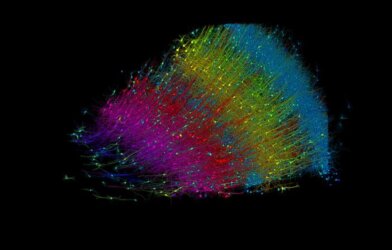The existence of genetic abnormalities in DNA sequences heightens the risk for developing certain brain disorders, according to a new study from the Icahn School of Medicine at Mount Sinai. These genetic differences may work by altering the genetic activity of microglial cells, which are the immune cells of the central nervous system.
Given their role as the immune cells of the central nervous system, microglial cells play an enormous part in brain health. They are responsible for fighting various infections in the brain, as well as identifying, cleaning, and removing damaged neurons.
It was long believed that microglial cells only play a reactive role in brain health. But recent years have led to the belief that microglial cells may have a much larger role in dictating the brain’s wiring than previously known.
Through the use of advanced genomic technology, researchers were able to create the largest and most in-depth microglial genomic atlas to date. This genomic atlas, or a guide of the genetic material in a cell, allowed researchers to analyze the plethora of potential roles microglia play in the brain at a level never before possible.
Recent studies have come to recognize a potential link between specific DNA sequences and the development of certain brain disorders, though the precise genes responsible for those links have remained elusive. Researchers hoped to learn more about these likely connections through this study while aiming to uncover further insight into the role and functions of microglial cells in the brain.
A total of 100 brains from deceased individuals were used for this study, four of which had been previously diagnosed with a psychiatric or neurological disorder. The brain samples ranged from age 21 to 103, with an average age of 73. Researchers then obtained thousands of microglial cell samples from four different regions of the brain and used genetic activity experiments to test and determine the gene activity of those microglial cells.
As expected, the role and function of microglial cells were shown to change and evolve over time. These changes in microglial cell function were also shown to vary by brain region, indicating that microglial cells play a variety of roles throughout the brain and during the aging process.
Additionally, the study was able to identify two new genes that may be associated with the development of two common brain disorders. USP6NL, which appeared to have a connection with Alzheimer’s disease, and P2RY12, which appeared to have a connection with Parkinson’s disease. Researchers were also able to discover potential new links between microglial cells and other common brain disorders, such as multiple sclerosis, schizophrenia, and bipolar disorder.
The creation of a microglial genomic atlas was crucial to the study’s success and is a necessary guide to thoroughly understanding the many roles of microglial cells, according to researchers. With this genomic atlas, researchers believe they can continue their exploration, expanding their knowledge of microglial cells moving forward.
This study is published in Nature Genetics.
Article written by Adam Swierk












